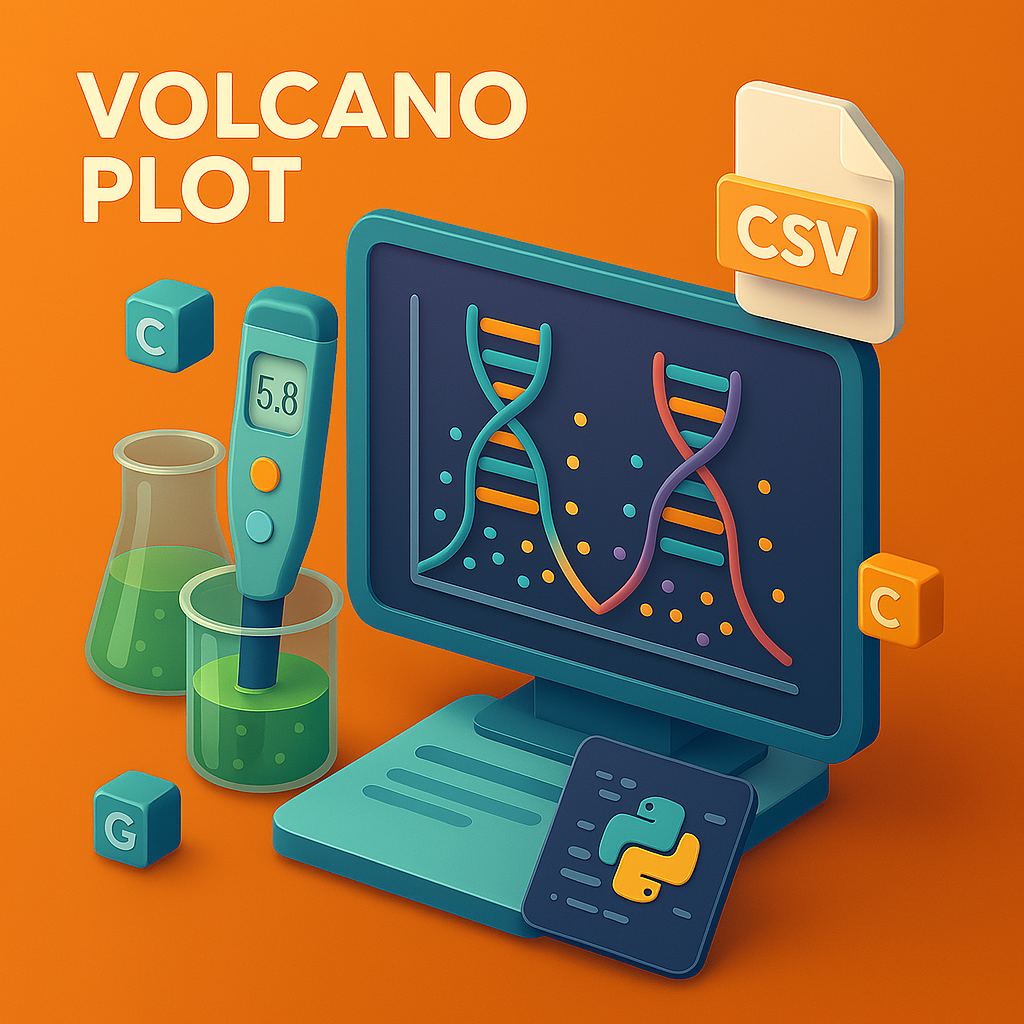
Best Free Tools to Plot Volcano Plots from CSV Data
Hey biotech students & early researchers! 👋
If you’ve just finished your RNA-seq or proteomics analysis, you’re probably staring at a huge CSV file full of log fold changes and p-values, wondering how to make a clear, publication-worthy volcano plot.
Good news: you don’t need expensive software. Here’s a quick roundup of the best free tools (online and open-source) to turn your CSV into an impressive volcano plot in minutes.
🏆 1. VolcaNoseR (R Shiny web app)
Where: https://huygens.science.uva.nl/VolcaNoseR/
Why it’s great:
✅ Completely browser-based — upload your CSV, pick columns, and customize thresholds.
✅ Interactive: hover to see gene/protein names, auto-label top hits.
✅ Download high-res PNG or PDF.
Best for:
Quick, shareable volcano plots — great for thesis presentations or lab meetings.
🐍 2. Python (seaborn / matplotlib scripts)
Why it’s great:
✅ Complete control over style (colors, labels, thresholds).
✅ Can easily automate plots for multiple datasets.
✅ Free & open-source forever.
Best libraries:
pandas to read your CSV
matplotlib and seaborn to plot
numpy for threshold calculations
Downside:
A small learning curve if you’re new to Python. But plenty of volcano plot tutorials are online!
🔬 3. R + ggplot2
Why it’s great:
✅ The gold standard for data visualization in bioinformatics.
✅ ggplot2 gives beautiful, publication-ready plots.
✅ Tons of volcano plot templates on GitHub.
Starter template:
library(ggplot2)
data <- read.csv(“results.csv”)
ggplot(data, aes(x=log2FoldChange, y=-log10(pvalue))) +
geom_point() +
theme_minimal()
Best for:
If you’re already using DESeq2 or EdgeR, you’re halfway there — just pipe the results into ggplot2.
🌐 4. GraphPad Prism (demo / limited free)
Why it’s on the list:
While not fully free, GraphPad Prism’s demo lets you create volcano plots from CSV easily. If you’re preparing a thesis figure, this is handy for short-term needs.
📊 5. Galaxy Europe (Web platform)
Where: https://usegalaxy.eu/
Why it’s great:
✅ No coding needed, just upload your data & use volcano plot tools under the Visualization section.
✅ Integrates smoothly if your DE analysis was also done on Galaxy.
✅ 3 quick tips for plotting volcano plots
📝 Use -log10(p-value) on the Y-axis. It makes small p-values (significant hits) show up high on the plot.
🎯 Highlight or color genes of interest (like specific biomarkers) — reviewers and lab mates will thank you.
📁 Always save both your plot image and the underlying filtered CSV data for reproducibility.
🔗 References & handy guides
Illumina (2023). ‘Data visualization for differential gene expression.’ Available at: https://www.illumina.com
Blighe, K. et al. (2022). ‘EnhancedVolcano: publication-ready volcano plots in R.’ Bioinformatics, 38(2), pp. 472–474. DOI: 10.1093/bioinformatics/btab658.
🎉 Summary: Which should you use?
If you want… Use this tool
Easiest no-code option VolcaNoseR (web app)
Fully customizable plots R + ggplot2 or Python
Analysis + plotting combo Galaxy Europe
Quick thesis figures GraphPad Prism demo
